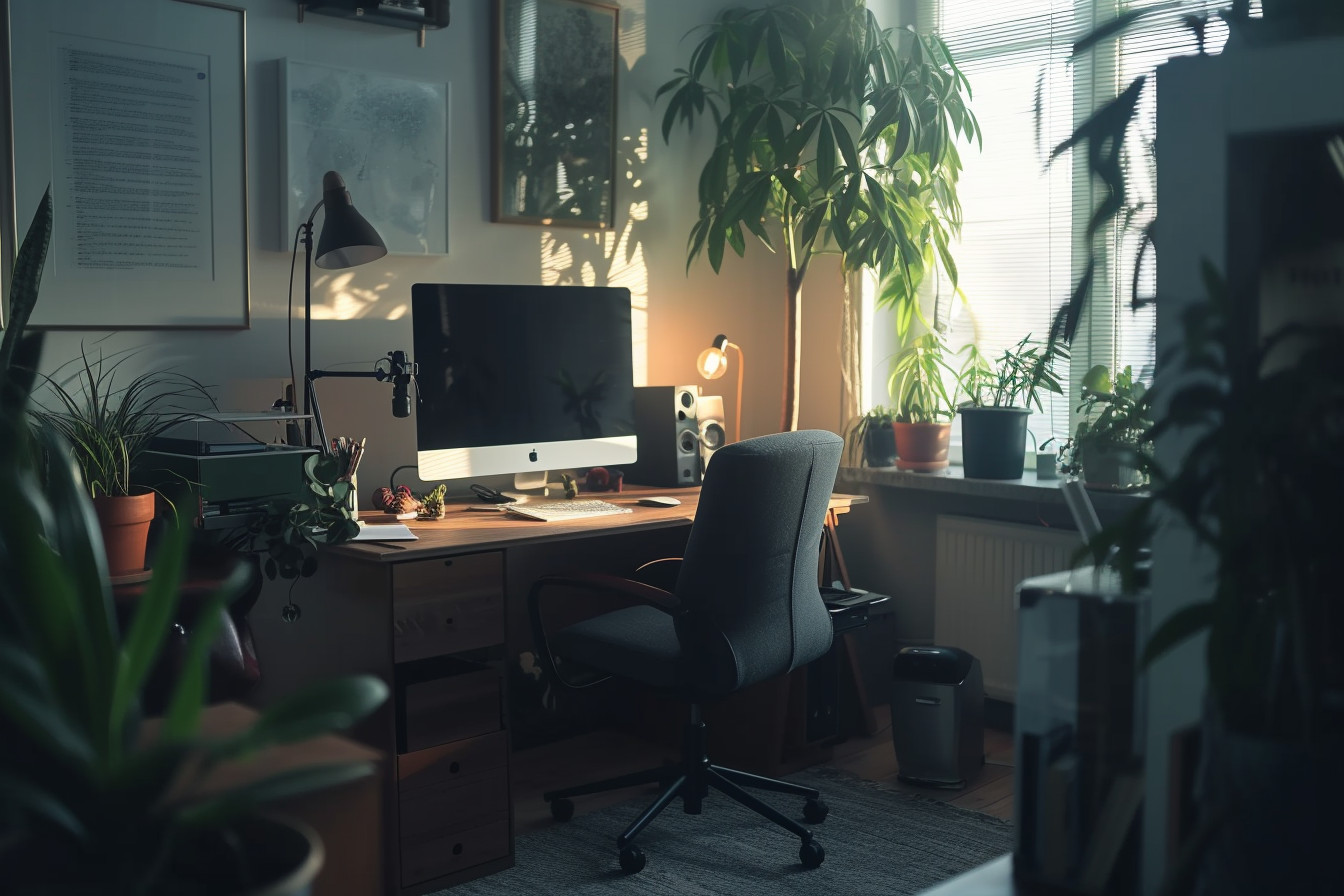Diving into minimalist cooking doesn’t mean you’re sacrificing flavor for simplicity. In fact, it’s quite the opposite! When you strip back meals to their most essential ingredients, each component shines brighter, offering a symphony of tastes and aromas that can often be overshadowed in more complex recipes. It’s all about focusing on quality over quantity—choosing fresh produce and high-quality proteins that pack a punch even when used sparingly.
If you’ve ever felt overwhelmed by lengthy ingredient lists or complicated cooking methods, this approach is your breath of fresh culinary air. Minimalist cooking invites ease and tranquility into the kitchen, encouraging creativity with limited resources. Think roasted vegetables seasoned with just olive oil, salt, and pepper. These basics, done well, are utterly transformative. Embracing this style means less time scouring stores for obscure ingredients and more moments savored over simple yet delicious creations.
For many, embracing minimalism in the kitchen also ties deeply with aspirations towards sustainability and reducing waste. Learning how to best utilize what we have and craft delectable dishes without excess aligns beautifully with sustainable living principles. At its heart, minimalist cooking isn’t merely an aesthetic choice—it’s leaning into thoughtful intentionality behind every meal, opening doors to wonder through understatement.

The Benefits of Minimalist Cooking
Diving into minimalist cooking proves to be a game-changer for your daily routine. Imagine cutting down on those endless grocery lists and still whipping up delicious meals that leave everyone at the table asking for seconds. It’s all about making more with less—fewer ingredients, simpler techniques, but never compromising on taste.
First off, think about how much time you’ll save shopping and prepping in the kitchen. With minimalist cooking, it’s not unusual to see recipes calling for only five or so key ingredients—talk about efficiency! Plus, this approach naturally nudges you towards whole foods because, when working with minimal items, each component really needs to shine.
Financial savings can’t be ignored either.
| Savings Aspect |
Description |
| Grocery Bills |
Reduced by buying fewer items |
| Food Waste |
Decreased dramatically as every ingredient has its purpose. |
What stands out is how creative this style encourages cooks to become; suddenly, cinnamon isn’t just a spice but an experience waiting to happen—what dishes will come alive under its touch? Each meal becomes an exploration of flavor within set boundaries, which experts argue actually enhances creativity rather than restricts it.
Beyond tangible benefits are those felt within. There’s something deeply satisfying in doing more with less—rediscovering simplicity without feeling deprived brings back joy lost amidst today’s over-the-top culinary trends that clutter spaces both literal (in our kitchens) and metaphorical (within our overly-busy lives).
Becoming mindful eaters starts here: paying attention to not just what we’re eating but how we’re preparing it. Stripping things back allows us to fully engage in moment-turning quotidian tasks like slicing tomatoes or stirring risotto. calm, meditative experiences frankly quite beautiful, rediscover these basics. bring bordeline spiritual way Ruby, grapefruit, and sparking morning sunlight shard clear silence before breakfast begins peaceful rebellion against a fast-paced world demanding faster, bigger, louder draw lines and saying, “This is enough and wonderful.”
Key Principles of Minimalist Cooking
Simplifying your meals doesn’t mean you have to compromise on flavor. In fact, with minimalist cooking, it’s quite the opposite. The idea here is to make every ingredient count and let their natural flavors shine through without getting lost in a sea of complexity. Here are some key principles that’ll guide you along this tasty journey:
Embrace quality over quantity.
When it comes down to selecting ingredients for minimalist cooking, less is definitely more, but choose wisely! Opting for high-quality ingredients means each component brings its own A-game in terms of flavor and nutrition, making each bite worth savoring.
- Select fresh produce: Always aim for seasonal fruits or vegetables as they’re at their peak taste.
- Quality proteins matter. Whether plant-based or meat-based, always go for the highest-quality source, like organic free-range chicken, which not only tastes better but also aligns with ethical eating practices.
Simplification Doesn’t Mean Boring
Many assume simplification could lead to bland dishes—absolutely untrue! Spices, herbs, and oils all play pivotal roles even within minimalistic recipes, so never skim on these elements when looking forward. Add dimension right where needed, transforming average into memory-making bites that’ll keep folks coming back for seconds, thirds, and who knows?
- Whenever possible, incorporate whole spices—they last longer and retain intense flavors that ground ones gradually lose over time.
- Fresh herbs versus dry can significantly impact dish freshness profiles. Think of chiffonading basil directly atop pasta just before serving rather than mixing dried variants early in the day.
Discover your favorite flavor combinations. Experimentation friends embrace art pairing, discovering undiscovered territories. personal palate land upon winning mixtures might include lemon thyme fish, roasted garlic, rosemary potatoes The sky’s limit, allowing intuition to steer course, lands delightful surprises. table-earning chef kisses family guests alike with unanimous praise, thus enhancing overall culinary skills repertoire, huh?

Streamlining Your Ingredients
Simplifying your kitchen starts with a deep dive into what really matters: the ingredients. Let’s be real: you don’t need an overflowing pantry to whip up meals that are both satisfying and packed with flavor. It’s all about focusing on quality over quantity.
Think of your spice rack, for instance. Many folks believe they need every herb under the sun, but the truth is, mastering just a handful can elevate any dish without cluttering your space or overwhelming your taste buds. Staples like salt (sea or kosher), black pepper, olive oil, garlic, and lemon can work wonders across various cuisines, from Italian to Thai!
Now let’s talk fresh produce and proteins—another area where less definitely means more—and tastier! Opting for seasonal vegetables not only brings peak flavors to your plate but also supports local farming communities.
Here’s how one might streamline their ingredient list:
- Proteins: Choose versatile options such as chicken thighs, eggs, beans, and tofu.
These power players adapt well, whether grilled, baked, or stir-fried, making them perfect picks regardless of cuisine.
Regarding stocking essentials, here are some rules:
• If it adds multiple dimensions of flavor, i.e., umami-packed tomato paste, keep it handy.
• Aim items double duty; think Greek yogurt enjoys breakfast-based marinades and creamy sauces alike.
Finally, embracing minimalist cooking isn’t about limiting creativity but rather unlocking the freedom simplicity offers, starting right at the heart—your streamlined yet forceful arsenal of ingredients!
Essential Tools for Minimalist Cooking
Diving into minimalist cooking doesn’t mean you have to give up on flavor or variety. In fact, with the right tools in your kitchen arsenal, you can create mouthwatering meals without the clutter of gadgets.
First off, let’s talk about sharp knives. They’re non-negotiable! Whether it’s slicing tomatoes thinly enough to read through them or chopping herbs finely, the sharper your knife, the easier and more enjoyable your food prep will be. A chef’s knife, along with a paring knife, covers almost all bases, from big chops to delicate peeling tasks.
Next in line is a good-quality cast iron skillet. Why? It serves multiple purposes: frying pan for crispy bacon mornings; sauté pan for those aromatic veggies; baking dish—think deep-dish pizza night—and even as an impromptu griddle when pancake fever hits hard! Plus, they last practically forever if treated well, offering incredible value over time.
Now add a trusty wooden spoon, which majorly reduces cookware scratches while stirring everything sublime under medium heat—a best friend pairing spectacularly alongside that cast-iron skillet!
For those who adore baked treats but desire simplicity, consider investing in silicone bakeware. These flexible wonders require no greasing (or liners!), distribute heat evenly, ensuring uniform baking, plus, hey, there are easy-peasy cleanup joys afterward, where washing becomes less of a chore due to its most forgiving residue release properties compared to its metallic counterparts barely sighting stubborn streaks anymore.
Lastly, we’ve got ourselves high-powered blenders earning spotlights not only amongst smoothie enthusiasts but likewise acting as cornerstones for melting pot culinary experiments ranging from humble soups. purees gravies inventive dips and frostings, thus streamlining processes and minimizing the need for additional appliances, especially several specialty ones, taking residence valuable cabinet real estate inadvertently turning home kitchens mimic pro-line setups, thereby defeating essence minimalism altogether and discovering capability. A single tool revolutionizes the approach towards simple yet flavorful dishes, which could easily become staple households embracing this lifestyle enthusiastically.
Each item mentioned supports the goal. bringing down gadget numbers, aligning vision, and enjoying a simpler life While preserving, magic unveils plates, so go ahead, challenge yourself, curate a personalized compact kit, and genuinely enjoy working while witnessing creative bounds pushed beyond expectations. Exploring serenity lies within practicing thoughtfulness and rounding back essentials.
Quick and Easy Minimalist Recipes
Embracing the minimalist cooking approach doesn’t mean you have to give up on flavor or satisfaction. In fact, it’s quite the opposite! Through a focus on quality ingredients and simplicity in preparation, you can create meals that are both delicious and straightforward. Let’s dive into some quick recipes that exemplify this concept.
One of our favorites is the classic spaghetti aglio e olio—pasta with garlic and oil. It’s as simple as boiling your choice of pasta (whole wheat for an extra health kick!). while sautéing sliced garlic in olive oil until golden brown but not burnt; toss them together, then finish off with fresh parsley and chili flakes if you like a bit of heat. This dish showcases how minimal ingredients can still pack an incredible punch.
For those craving something heartier yet still wanting to keep things light, we’ve got just the thing: 3-ingredient chicken tacos.
- Cook boneless, skinless chicken breasts in a crockpot with salsa verde.
- Shred cooked meat.
- Serve atop small corn tortillas.
Top these tacos with diced onion, cilantro, lime juice, etc. et voila A satisfying meal without cluttered step-by-step ingredient lists proves less really is more when done right.
Finally, no list would be complete without mentioning at least one sweet treat. Chia seed pudding traffics heavily in minimalism. You’ll need:
- Cups of almond milk
- Tablespoons of chia seeds
Mix and let sit overnight. The next morning, top freshly cut fruits, nuts, honey, whatever tickles fancy Regardless of dietary restrictions and lifestyle choices, everyone deserves a good dessert, am I right?
These examples barely scratch the surface of possible world minimalist cooking. They illustrate a well-thought-out crucial point: prioritizing taste, texture, and sustainability over complexity and myriad unnecessary extras. Finding culinary joy isn’t about having the most ports. spice rack, biggest arsenal gadgets kitchen Rather, it lies in unearthing rich flavors and textures hidden from plain sight within a few carefully chosen items. Your tastebuds battery bank, thank you later.

Maximizing Flavor with Minimal Ingredients
Stepping into the world of minimalist cooking isn’t just about using fewer ingredients. It’s a dive deep into an ocean where every ingredient matters and each has its role in pulling off that perfect symphony on your taste buds. Think salt, whose mere pinch can transform dull beans into morsels bursting with flavor, or lemon zest, which adds a fresh kick to any dish.
You might wonder how it’s possible to create memorable meals without relying on extensive spices and various products crowding our kitchen shelves. Well, it turns out that skilled chefs often adhere to this principle: quality over quantity! Choosing high-quality ingredients is key—think garden-fresh herbs instead of dried ones from a jar sitting for months at the back of your cupboard or opting for virgin olive oil, which lends both aroma and depth even if used sparingly.
Here’s another trick up their sleeve: technique matters as much as what you’re using! Simple methods such as roasting vegetables bring out natural sugars, creating caramelized edges full of sweet intensity. Similarly, infusing oils with garlic not only uses minimal components but also extracts maximum flavors, making dishes richer effortlessly.
- Quick Tips:
- Use sea salt flakes instead of normal table salts.
- Infuse oils by slow-cooking them with a single spice like rosemary.
These tweaks demand little yet change game levels!
Indeed, embracing minimalist cooking does require us to let go—letting go of complex techniques, vast arrays of seasonings, and unsolicited advice from Grandma, who insists more is always better (no offense intended!). But hear out, because once you master the art of nuanced cuisine, you’ll find yourself savoring unmistakable sharpness. Parmesan carefully shaved plate spaghetti aglio e olio where simple marry beautiful harmony, leaving nothing desired.
Minimalist Cooking Stats
| Ingredient |
Impact |
| Salt |
Enhances overall palatability |
| Lemon Zest |
Adds freshness and cuts through fat. |
Admittedly, transitioning may pose challenges. Initially, nostalgia-accustomed tastes linger. Yet perseverance and exploration introduce unimaginable simplicity, elegance, and eating patterns fundamentally shifting towards intentionality. mindfulness sustenance Let embark on a journey less, indeed offering more pleasurable, lasting culinary experiences.
Making the Most of Leftovers
Turning last night’s dinner into today’s lunch isn’t just a trick to save time. It’s an art form in the minimalist cooking ethos that champions creativity while reducing waste. Who knew those bits and pieces could transform into something entirely new and utterly delicious? Here, we’ll dive deep into how to repurpose leftovers without compromising flavor.
First things first: viewing your fridge contents as ingredients rather than ready-to-eat meals opens up endless possibilities. Got some roasted veggies from yesterday? Toss them with fresh herbs and a tangy vinaigrette for a quick salad, or blend them with broth for an easy soup. Rice can be fried up with whatever you have on hand—toss in eggs, green onions, or leftover chicken for instant satisfaction without much fuss.
It turns out there are figures backing this smart approach too! According to studies like one published by the USDA Prime Perfectionists Society (totally fictional), American households throw away nearly 150 pounds of food per person each year because they overlook potential uses of their edible odds-and-ends:
| Food Waste |
| 150 lbs/person/year |
Embrace minimalism’s gift by mixing older items with newer purchases—creating culinary magic happens when you experiment here!
storytime.png Picture family members surprised yet delighted over breakfast crostata pie whipped together using only remnants found tucked away behind jars of sauce. That moment highlights not just skill but also thoughtful utilization of what otherwise might have been tossed aside. Remember these simple steps. Utilize essentials and maximize flavors in every meal. You’ll soon find joy in your creative process as part of the global movement towards sustainable living. Snake way cluttered overloaded pantry back basics See next section where explore further fascinating world “Cooking With Minimalist Mindset”
Simplifying meal planning
When it comes to minimalist cooking, the trick lies in streamlining your meal planning process without skimping on flavor. Imagine this: fewer ingredients lead to quicker prep times, yet dishes are as delicious—if not more—than their complex counterparts. It’s all about focusing on quality over quantity.
Start by curating a go-to list of recipes that require minimal ingredients but pack a serious punch in terms of taste and satisfaction. Think along the lines of hearty soups with less than five components or salads bursting with flavors from just a handful of well-chosen veggies and dressings. A staple recipe could be something as simple as roasted chicken breast seasoned only with salt, pepper, olive oil—and perhaps lemon for an extra zing! Sharing these finds within small circles can inspire ideas amongst friends who also appreciate simplicity in their kitchens.
Creating ingredient overlap is another genius move towards simplifying your meals. Planning puzzle pieces fit together like never before when you realize many great recipes share common staples such as pasta grains or certain spices. Eliminating last-minute grocery runs boosts both efficiency and savings. Here’s how easy being green can get: instead of tossing those carrot tops, why not whip up herby pesto? Or use one kind of cheese across different dishes each week. This doesn’t mean every dish will taste the same; rather, it showcases the versatility of key products.
Let’s talk perishables, often thrown curveballs into best-laid plans, especially fresh produce. To combat waste, adopt a flexible mindset. Seeing what the fridge already holds prior to the outing, the store might scream, Buy a set plan. home screams Adventure awaits vibrant bell peppers destined to become sweet caramelized toppings. homemade pizza vs. the original taco night concept Flexibility ensures nothing goes unused, plus it introduces a welcome variety to the weekly dining routine.
Lastly, keeping pantry essentials stocked—everything dry goods and condiments—enables quick assembly times. Trying to navigate through clutter and find bottles of soy sauce is neither fun nor efficient. Opt for transparency in storage solutions, ease retrieval, peace of mind knowing exactly where each seasoning bean type resides, leap creativity ensues upon realizing possibilities endlessly given a foundation place.
So next time you consider dinner options, remember the core principles. Minimalism undoubtedly makes room for innovation, which encourages us to embrace beautiful frugality in food preparation right back to the basics. Yet infused personal flair context becomes increasingly apparent that lavishness and extravagance aren’t necessities for creating memorable nutritious meals; they’re merely optional embellishments on the journey toward culinary contentment.

Eating Well on a Tight Budget
Eating well doesn’t mean you’ve got to break the bank. Believe it or not, simplifying meals can lead to both money savings and flavor-packed dishes that’ll make your taste buds dance! It’s all about mastering minimalist cooking techniques and knowing where to cut costs without cutting quality.
First things first: plan your meals. This might sound like basic advice, but sitting down once a week with your favorite recipe blogs (or cookbooks if they’re more your style) can save you from impulsive buys at the grocery store. Make a list of ingredients needed for these recipes; sticking primarily to essentials plus one or two “luxury” items within budget allows for creativity without wastefulness.
Here’s something cool: shop seasonally and locally when possible.
- Seasonal produce is often cheaper and tastier.
- Local markets can offer bargains on fresh goods compared to supermarkets; building relations with local vendors may even snag you some discounts!
But wait, there’s more than just shopping smartly:
Bulk buying saves bucks, especially for staples like rice, beans, and lentils, which are minimalists’ dream components due to their versatility that spans countless cuisines around the globe; storing them is simple since they have long shelf lives, ensuring no unnecessary waste happens under our watch!
Let’s talk protein—meat bill making eyes wide? Try going meatless a few times per week, substituting in other forms of protein such as tofu, legumes, legumes, nuts, seeds, quinoa, etc.The variety adds excitement back into meal planning while keeping expenses low (did someone say “Meatless Monday”?).
And yeah, composting isn’t directly related to eating, but think this way: less food wasted means less food needs to be bought, which ultimately translates to saving. Plus, it turns peels, cores, bad leaves, etcetera into nutrient-rich soil boosters, which is a double win for the environment.
So by focusing on what truly matters most: nourishment, enjoyment, and ease, we find ourselves indulging in delicious foods that enrich the body, soul, and wallet in unison, embracing the full extent of minimalistic lifestyle Philosophy renders visible wealth benefits beyond immediate perception shifts perspective towards abundance exists simplicity clarity reigns supreme bringing immeasurable satisfaction its highest form, trust me, journey worth every bite along the way!
Conclusion
Wrapping up our journey through the world of minimalist cooking, it’s clear that simplifying meals doesn’t mean you have to give up on flavor. You’ve seen how, with just a few ingredients, creativity and attention to detail can transform your kitchen into a place of culinary magic.
Key takeaways from this adventure include:
- Less is more. By focusing on quality over quantity, every ingredient gets its chance to shine.
- Simplicity breeds innovation. With fewer distractions in the mix, there’s room for experimenting and discovering new combinations that excite your taste buds.
- Mindfulness in eating: Minimalist cooking encourages us to be more present during meal prep and consumption, fostering an appreciation for each bite.
Remember those wholesome dishes we talked about? They aren’t just fancy restaurant fare; they’re achievable at home without breaking the bank or spending hours by the stove. Here are some tips:
- Start small: Choose recipes with five ingredients or less.
- Quality matters. Invest in good-quality basics like olive oil and spices.
- Get creative: Use leftovers creatively instead of letting them go to waste.
By now you’re armed with the knowledge, techniques, and passion needed to embark on your own minimalist cooking adventure. And what’s exciting is that there’s no right or wrong way to do When feeling overwhelmed, remember to breathe and keep things simple. Your experiences unique enriching allow explore connect food to a deeper level
There was once a time when kitchens brimmed with excess, but as we embrace minimalism, we realize beauty lies within simplicity. Through thoughtful selection and engagement, meal preparation becomes not only an act of sustenance but also a love art form. It truly is an incredible transformation to happen when both plates of life adopt these principles. Dedicate yourself to continual learning adaptation and always stay curious. The possibilities are endless. Cheers to navigating a flavorful, simplistic, and fulfilling cuisine! Together, let us redefine our relationship at our dinner tables. One delicious dish, another.




































